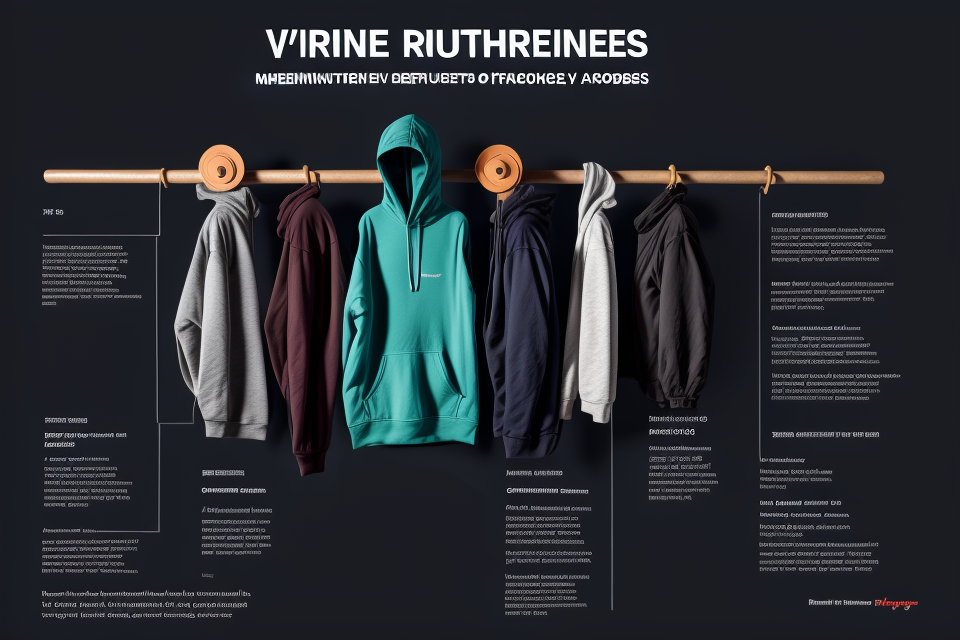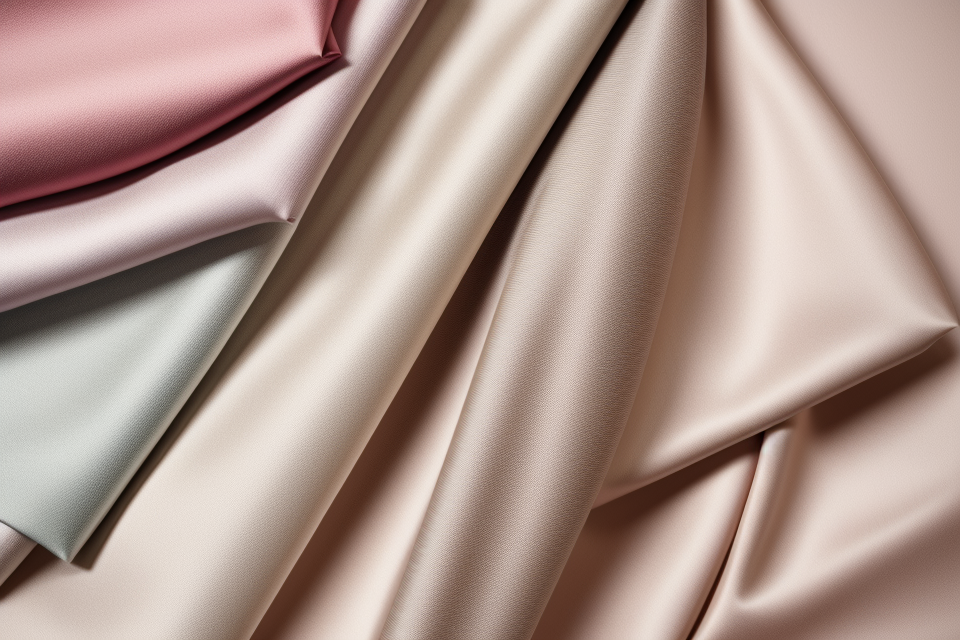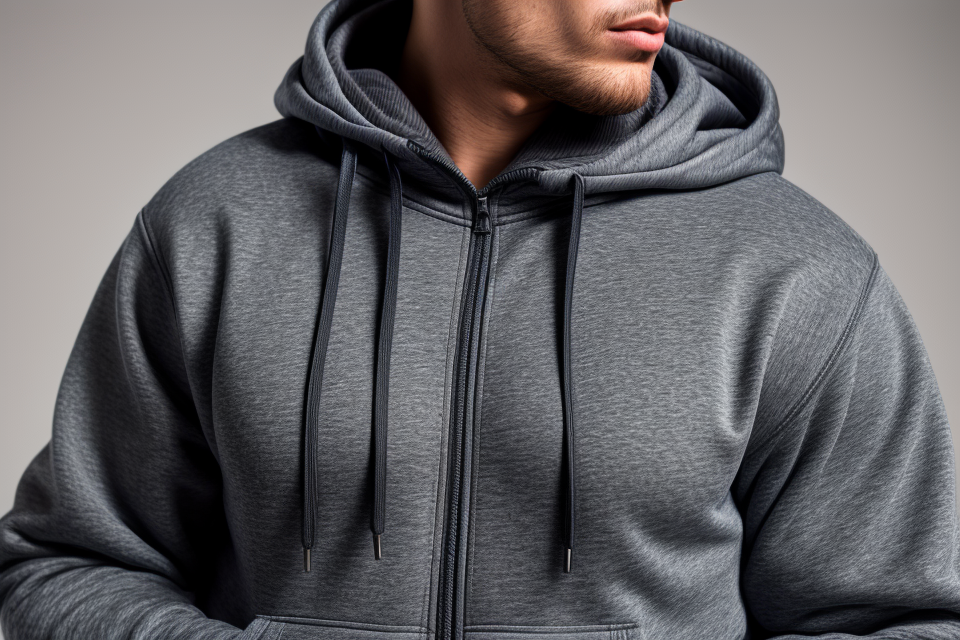
A hoodie is more than just a piece of clothing. It’s a statement, an expression of style, and a reflection of one’s personality. But what makes a hoodie high quality? What sets it apart from the rest? In this guide, we’ll explore the essential elements of a high-quality hoodie, from the materials used to the craftsmanship involved. Get ready to discover what makes a hoodie worth investing in and how to spot the difference between a good hoodie and a great one.
Understanding Hoodie Materials
Different Types of Fabric Used in Hoodies
When it comes to hoodies, the type of fabric used can greatly impact the quality and comfort of the garment. Here are some of the most common types of fabric used in hoodies:
- Cotton: Cotton is a natural fabric that is known for its softness and breathability. It is a popular choice for hoodies because it is comfortable to wear and can be made in a variety of weights to suit different climates. However, cotton is also prone to shrinking and wrinkling, so it may require more maintenance than other fabrics.
- Polyester: Polyester is a synthetic fabric that is known for its durability and resistance to wrinkles. It is often used in hoodies because it can withstand a lot of wear and tear, and it does not require as much maintenance as cotton. However, polyester can be less breathable than cotton, and it may not be as comfortable to wear in hot weather.
- Fleece: Fleece is a synthetic fabric that is known for its warmth and softness. It is often used in hoodies because it is very comfortable to wear and can provide excellent insulation. However, fleece is also prone to pilling, which can make it look less than perfect over time.
- Blends: Many hoodies are made from blends of different fabrics, such as cotton and polyester or cotton and fleece. These blends can offer the best of both worlds, with the softness and breathability of cotton and the durability and wrinkle-resistance of polyester or fleece. However, blends can also be more expensive than fabrics made from a single type of fiber.
Factors to Consider When Choosing Hoodie Materials
When choosing hoodie materials, there are several factors to consider. These factors will help you determine the quality of the hoodie and ensure that it meets your needs.
Comfort
Comfort is a crucial factor to consider when choosing hoodie materials. The material should be soft and lightweight, allowing for a comfortable fit. The fabric should also be breathable, allowing air to circulate and preventing overheating. A hoodie that is comfortable to wear will be more enjoyable to wear, and you will be more likely to wear it regularly.
Durability
Durability is another important factor to consider when choosing hoodie materials. The material should be able to withstand regular wear and tear, and it should be able to last for a long time. A hoodie that is made from high-quality materials will be more durable and will last longer than a hoodie made from low-quality materials.
Breathability
Breathability is an essential factor to consider when choosing hoodie materials. The material should be able to allow air to circulate, preventing overheating and sweating. A hoodie that is breathable will keep you cool and comfortable, even if you are wearing it for an extended period.
Softness
Softness is an important factor to consider when choosing hoodie materials. The material should be soft and comfortable against the skin, providing a comfortable fit. A hoodie that is soft will be more enjoyable to wear, and you will be more likely to wear it regularly.
Warmth
Warmth is an essential factor to consider when choosing hoodie materials. The material should be able to keep you warm, especially during colder months. A hoodie that is warm will keep you comfortable during colder weather, making it a practical choice for the winter.
Overall, choosing the right hoodie materials is essential to ensure that you get a high-quality hoodie that meets your needs. By considering these factors, you can find a hoodie that is comfortable, durable, breathable, soft, and warm.
Factors Affecting Hoodie Quality
Fabric Weight and Type
When it comes to hoodies, the fabric weight and type are two key factors that can greatly impact the quality of the garment.
Lighter weight materials
Lighter weight materials are typically made from lightweight cotton or a cotton-blend fabric, and are ideal for summer wear or for individuals who live in warmer climates. These materials are lightweight and breathable, making them perfect for staying cool on hot days.
Heavier weight materials
Heavier weight materials, on the other hand, are made from thicker fabrics such as fleece or sweatshirt material. These materials are perfect for colder weather and provide extra warmth and insulation. They are also great for layering under jackets or coats.
Different finishes
In addition to weight, the finish of the fabric can also impact the quality of the hoodie. For example, a brushed finish can make the fabric feel softer and more comfortable against the skin, while an unbrushed finish can provide a more rugged, durable feel.
When choosing a hoodie, it’s important to consider both the weight and type of fabric, as well as the finish, in order to find a garment that is both comfortable and suitable for your needs.
Sleeve Length and Style
- Variations in length and cut
- Hoodie sleeve length is a crucial factor in determining the overall quality of the garment. A well-designed hoodie should have sleeves that are neither too short nor too long, as this can affect the fit and comfort of the wearer. Ideally, the sleeve length should be long enough to cover the wrists, but not so long that they get caught on objects or create unnecessary fabric bulk.
- The cut of the sleeve is also an important consideration. A poorly cut sleeve can lead to a poor fit, which can affect the overall comfort and durability of the hoodie. A well-designed hoodie should have sleeves that are cut to fit the contours of the arms, providing a snug and comfortable fit without being too tight or too loose.
- Split hem sleeves
- Split hem sleeves are a design feature that can greatly enhance the quality of a hoodie. This design feature involves a split in the hem of the sleeve, which allows for greater range of motion and flexibility. This can be particularly useful for active wearers who may be doing more than just lounging around in their hoodie.
- Split hem sleeves can also help to prevent the sleeves from riding up the arms during movement, which can be a common problem with traditional hoodie designs. This can lead to a more comfortable and functional fit, which can enhance the overall quality of the garment.
Zippers and Pockets
Quality of Zippers
The quality of zippers is an essential factor in determining the overall quality of a hoodie. A high-quality zipper should be made of durable materials that can withstand regular use and wear. The teeth of the zipper should be tightly sewn, and the slider should move smoothly without any catching or jamming. Additionally, a high-quality zipper should have a sturdy zip stop at the top to prevent the zipper from coming unzipped.
Type and Number of Pockets
The type and number of pockets on a hoodie can also impact its overall quality. A hoodie with multiple pockets provides more storage options for personal items such as keys, phone, and wallet. The pockets should be designed in a way that allows easy access while wearing the hoodie. The pockets should also be stitched securely to the hoodie to prevent them from ripping or falling off easily.
Furthermore, the material used for the pockets should be able to withstand the weight of the items placed inside them without tearing or stretching. Some hoodies may have additional features such as secret pockets for valuables, which can be a convenient and secure way to carry essentials.
Overall, the quality of zippers and the type and number of pockets are important factors to consider when evaluating the quality of a hoodie. A hoodie with high-quality zippers and pockets will provide better functionality and durability, ensuring a more comfortable and long-lasting wear experience.
Hood Design
- Adjustable drawstrings
- The drawstrings on a hoodie are a crucial component in determining its overall quality.
- Adjustable drawstrings allow the wearer to customize the fit of the hood, ensuring a snug and secure fit.
- This feature is particularly useful for people who want to keep their hoodie in place while they move around.
- Additionally, adjustable drawstrings can be easily adjusted to accommodate different hairstyles or head sizes.
- Double layer hood for extra warmth
- A double layer hood is a feature that is often found in high-quality hoodies.
- The inner layer of the hood is made of a thicker, warmer material than the outer layer.
- This design provides an extra layer of insulation, which helps to keep the wearer warm in cold weather.
- Additionally, the double layer hood is typically made of a material that is breathable, which helps to prevent overheating.
- The double layer hood is a feature that is particularly useful for people who live in colder climates or who enjoy outdoor activities in the winter.
Collar and Cuffs
When it comes to hoodies, the collar and cuffs are crucial elements that can significantly impact the overall quality and durability of the garment. Here are some factors to consider when evaluating the collar and cuffs of a hoodie:
Ribbed Cuffs and Collar
A well-made hoodie will typically feature ribbed cuffs and a collar that are made from a durable, high-quality material. These ribbed cuffs and collar provide a snug fit and help to keep the hoodie in place, even when you’re moving around. They also help to prevent the hoodie from stretching out over time, ensuring that it maintains its shape and size.
Layered Collar
Another feature to look for in a high-quality hoodie is a layered collar. This design adds an extra layer of insulation around the neck, helping to keep you warm in cold weather. It also provides an additional layer of protection against wind and rain, making it a great choice for outdoor activities.
Additionally, a layered collar can help to prevent the hoodie from becoming stretched out or saggy over time, as the extra layer of fabric helps to maintain its shape and structure.
In summary, when evaluating the collar and cuffs of a hoodie, look for ribbed cuffs and a collar made from a durable material, as well as a layered collar for added warmth and protection. These features can help to ensure that your hoodie is high-quality and long-lasting.
Factors Contributing to Hoodie Quality
Design and Craftsmanship
Quality of Print or Embroidery
When it comes to the design of a hoodie, the quality of the print or embroidery is an essential factor to consider. High-quality prints or embroidery should be sharp, vibrant, and long-lasting. The print should not fade or peel off easily, even after multiple washes. The design should also be accurately reproduced, with no misshapen or misaligned elements. Additionally, the print or embroidery should be evenly distributed across the fabric, without any unevenness or blotchiness.
Stitching and Seam Construction
The stitching and seam construction of a hoodie are also critical aspects of its design and craftsmanship. The stitching should be even, tight, and consistent, without any loose threads or uneven seams. The seams should be reinforced, and the hoodie should be well-constructed to ensure durability and comfort. A hoodie with high-quality stitching and seam construction will be able to withstand regular wear and tear, and will maintain its shape and form for a longer period of time.
Additionally, the seam construction should be functional and practical. For example, the hood should be well-designed and provide adequate coverage and protection from the elements. The pockets should be sturdy and well-positioned for easy access, and the cuffs should fit snugly and comfortably around the wrists. These details may seem small, but they can significantly impact the overall quality and functionality of the hoodie.
Brand Reputation and Customer Reviews
Quality of materials and workmanship
A high-quality hoodie should be made from premium materials that are both comfortable and durable. Some of the best materials for hoodies include cotton, polyester, and a blend of the two. The fabric should be soft to the touch and have a good weight to it, which means it’s not too light or too heavy. Additionally, the seams should be sturdy and reinforced to prevent wear and tear over time.
Positive customer feedback
Another important factor to consider when determining the quality of a hoodie is the feedback from other customers. Positive reviews can indicate that the hoodie is made from high-quality materials, is well-made, and is comfortable to wear. Additionally, it’s important to pay attention to the specific features that customers like and dislike about a particular hoodie, as this can provide valuable insights into what makes a hoodie high quality. For example, customers may rave about the hoodie’s warmth, comfort, or style, which can be important factors to consider when purchasing a hoodie.
FAQs
1. What makes a hoodie high quality?
A high-quality hoodie is made from premium materials that are durable, comfortable, and designed to last. These materials can include soft, high-quality cotton, polyester, or a blend of both. A high-quality hoodie will also feature a well-designed and thoughtful construction, with details such as double stitching, reinforced seams, and a lined hood to keep you warm.
2. What materials are used to make high-quality hoodies?
High-quality hoodies are typically made from materials such as premium cotton, polyester, or a blend of both. These materials are chosen for their durability, comfort, and ability to keep you warm. Look for hoodies made from heavy, high-quality cotton that feels soft and comfortable against your skin. Polyester hoodies are also a popular choice because they are lightweight, breathable, and resistant to wrinkles.
3. What are the benefits of wearing a high-quality hoodie?
Wearing a high-quality hoodie offers a number of benefits. First and foremost, a high-quality hoodie is designed to be comfortable and warm, making it perfect for cooler weather. A well-made hoodie will also be durable and long-lasting, so you can enjoy wearing it for years to come. Additionally, a high-quality hoodie is often made from breathable materials that will keep you cool in warmer weather.
4. How can I tell if a hoodie is high quality?
There are several signs that a hoodie is high quality. Look for details such as double stitching, reinforced seams, and a lined hood. A high-quality hoodie will also be made from premium materials such as soft, high-quality cotton or polyester. Additionally, a well-made hoodie will fit well and feel comfortable against your skin.
5. What is the best way to care for a high-quality hoodie?
To keep your high-quality hoodie looking and feeling its best, it’s important to care for it properly. This means washing it in cold water and hanging it to dry, rather than putting it in the dryer. Avoid using fabric softener or bleach, as these can damage the material. Additionally, avoid wearing your hoodie for long periods of time without washing it, as this can cause it to lose its shape and become less comfortable.


